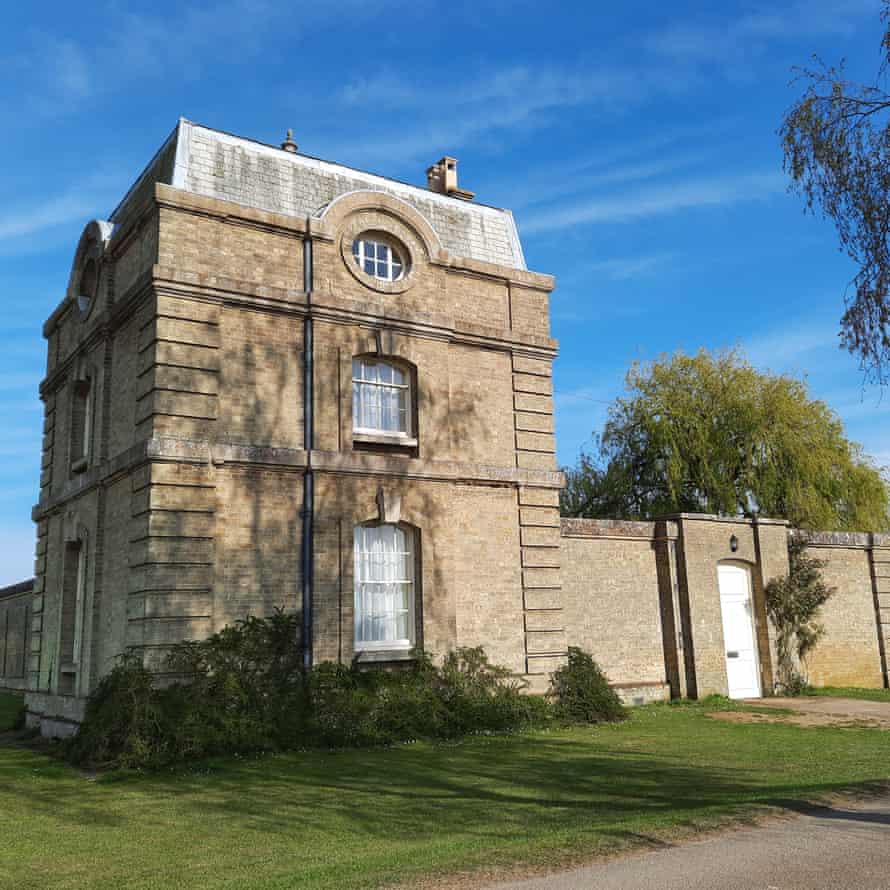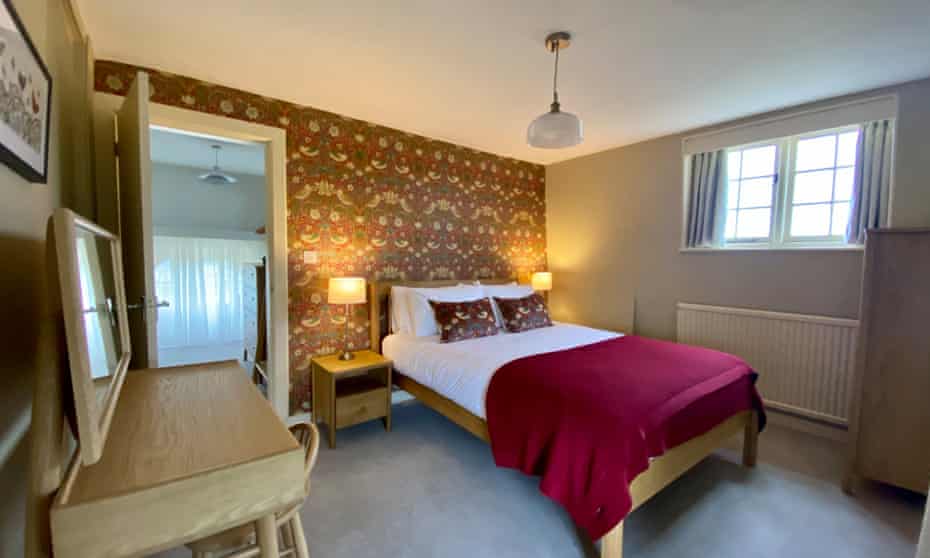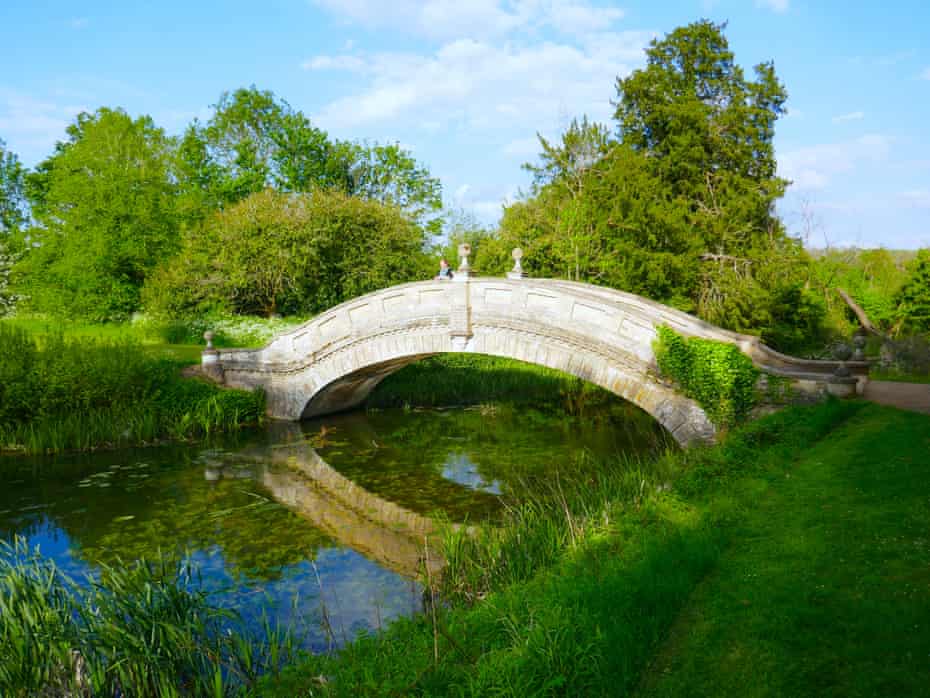A couple of swans are drifting on the sunset-gold lake in front of a baroque, domed pavilion. There are birds singing in the mistletoe-studded oak trees, and no other people at all.
I’m spending two nights in the newly opened Gardener’s House in the grounds of Wrest Park, a country estate in Silsoe, Bedfordshire. It is home to one of Britain’s most interesting landscape gardens. The biggest perk of staying here is that after other visitors have left (and before they arrive again) you can wander through the huge grounds on your own – the ultimate in social distancing.
These immaculate gardens and manicured avenues usually get about 140,000 visitors a year – and it’s extraordinary seeing the wildlife that takes over once the people have gone. Rabbits graze the lawns, muntjac fawns run through the flowering meadows round the willow pattern-style Chinese bridge and a watchful heron waits just a few feet away from me before flapping off along the Capability Brown-softened canals.

Wrest Park’s 36 hectares (90 acres) are a crash course in English landscape design through the centuries (both gardens and mansion are Grade I-listed). The focal Long Water was created before 1685 and Henry Grey, Duke of Kent, later commissioned the wooded Great Garden around it. Generations of Greys added features without destroying what was here already. Even Capability Brown, known for digging up formal gardens to replace them with natural-looking streams and rolling lawns, agreed with Henry’s granddaughter, Jemima, Marchioness Grey, in 1758 that to re-landscape Wrest Park too radically “might unravel the Mystery of the Gardens”.

Wandering through evergreens and flowering rhododendrons early the next day, I arrive at Jemima’s reddish ironstone bathhouse. She commissioned this picturesque semi-ruin, with its rustic thatched roof and lines of deer vertebrae embedded in a cobbled floor, in around 1770. It contrasts beautifully with the ornate stucco work of a French-style orangery round the corner that Thomas, Earl de Grey, Jemima’s grandson, built 65 years later, incorporating a fireplace from the old house. Inside, the powerful smell of citrus blossom takes me straight back to holidays in Greece. A few steps further, fragrant yellow roses are climbing round an old doorway. Even during opening hours, the grounds are big enough to absorb the 1,400 visitors that can currently book tickets each day and it rarely feels crowded, but my solitary walks have an enchanted atmosphere that feels quite unlike regular stately garden visiting.
I catch up with Andrew Luke, head gardener at Wrest Park. English Heritage took over the battered estate in 2006 and is now deep into a multi-decade programme of restoration. It was this work-in-progress energy that persuaded Luke to leave Kew Gardens, where he’d worked for 17 years, for a project that was evolving “rather than something already finished”.
Luke describes painstaking work by volunteers deciphering handwritten receipts for plants bought “years and years ago” and working with archaeologists to make sure nothing is damaged by someone getting “a bit happy on a mini-digger”. Of the many monuments hidden in the woods, Luke’s favourite is a claw-footed Mithraic altar, with pseudo-Greek and runic inscriptions, created by Jemima and her husband as an intellectual joke.

Wrest’s seasonal highlights include three magnificent purple-flowering Judas trees; Luke says he has never seen others trained this way with branches radiating across the wall. Nearby, one of his team of gardeners is marking patterns in the geometric beds of Thomas de Grey’s Italian Garden, ready for a gold-and-scarlet display of summer flowers. The earl inherited Wrest Park in 1833, knocked down the dilapidated medieval pile and built today’s French-style chateau with a terrace and parterre to match. I walk through the handful of rooms that are currently open to check out the ceilings: ornate gold scrollwork round painted panels in the library, and plasterwork fruit in the dining room, featuring pineapple, grapes and melon.
In one corner of the old walled garden, the holiday cottage itself is a three-storey 19th-century brick house, refurbished in tasteful shades of grey. There are three bedrooms, a huge William Morris-papered sitting room, dining room and full-kit kitchen with coffee machine, stove, fridge and a welcome hamper of bread and crumpets, butter, cheese, eggs, a bottle of wine and English Heritage jars of curd and jam.

Destined, surely, to be booked out in future, the house still has availability over the coming months. The sash windows on the first floor and characterful round windows at the top have grand views along the stately avenue of chestnut trees that line Wrest Park’s main drive and over the fields outside towards the distant Chilterns. The house’s own, relatively simple, garden has a tall weeping willow on the lawn, wisteria over the big outdoor table, and a mature magnolia above the stiff wrought-iron gate that leads to the park. Having breakfast alfresco, I am joined by two mallards, a hen pheasant and a tree full of goldfinches.
Free entry to English Heritage sites (plus 10% off in shops and cafes) is another bonus of staying here, and the Jacobean mansion at Audley End is about an hour’s drive. On the way there, the purple fields of Hitchin Lavender are now open (£7). Five miles south are the National Trust’s ancient beech-topped ridges at Sharpenhoe (free) and the chalky slopes of Barton Hills nature reserve, home to downland flowers and butterflies.






